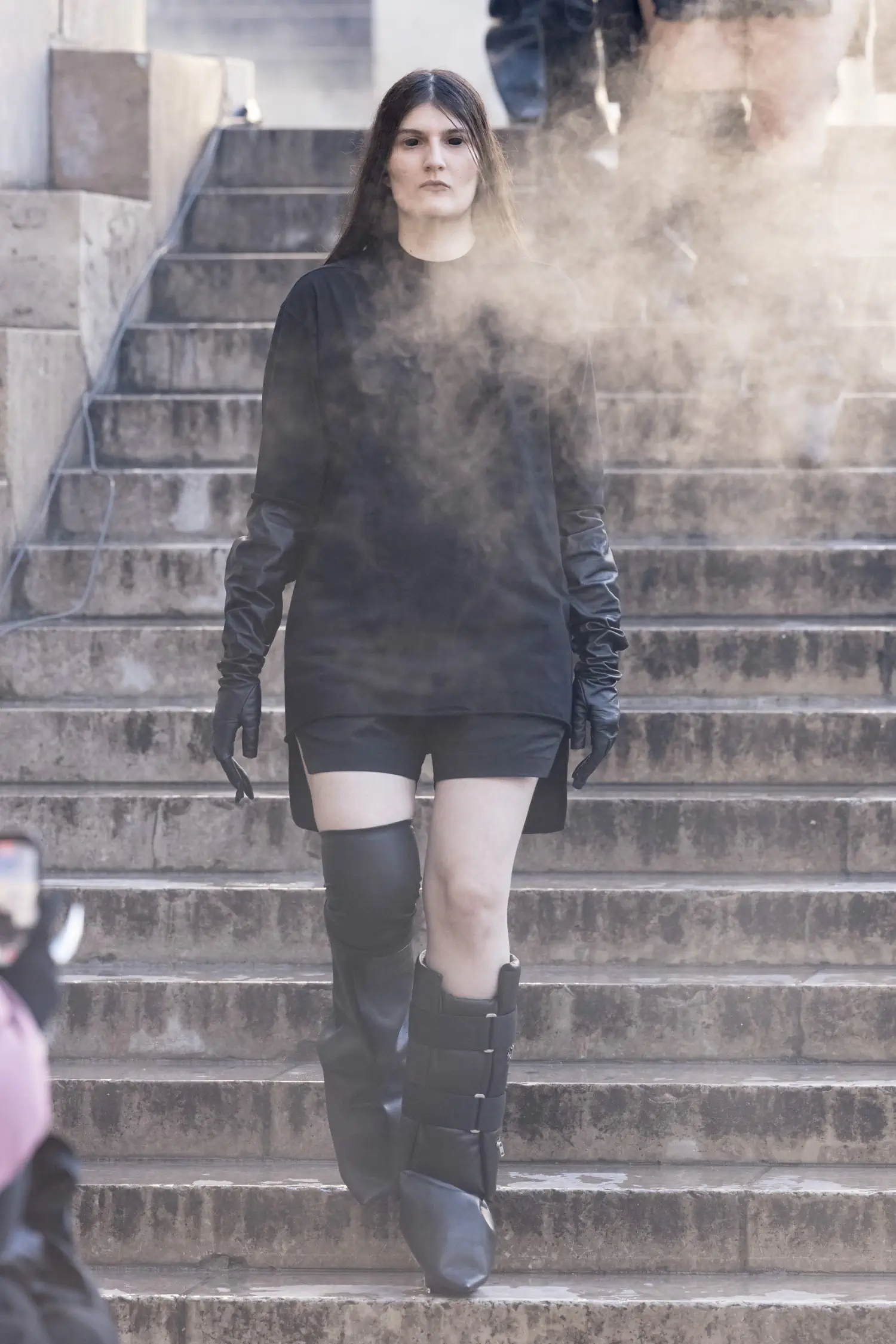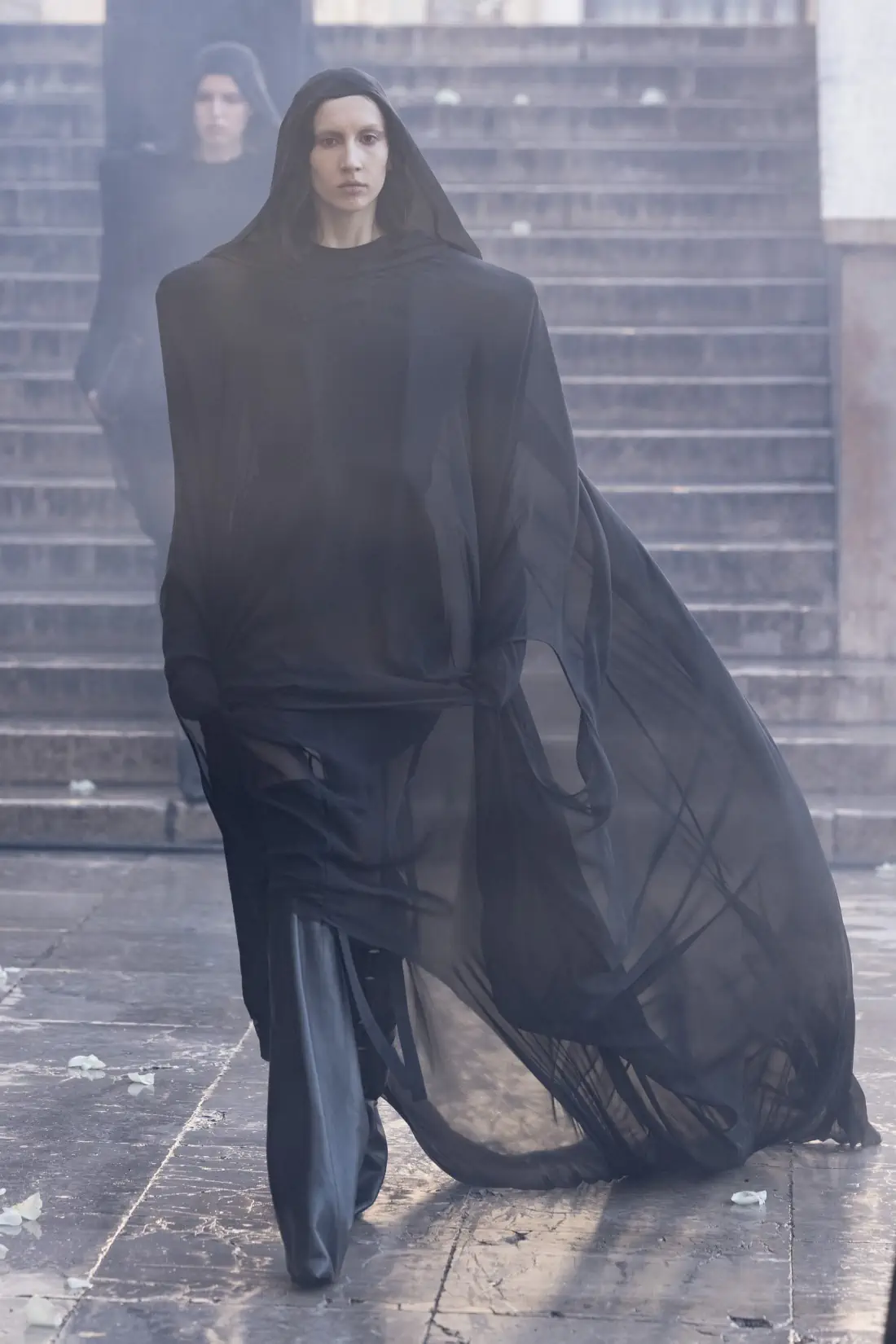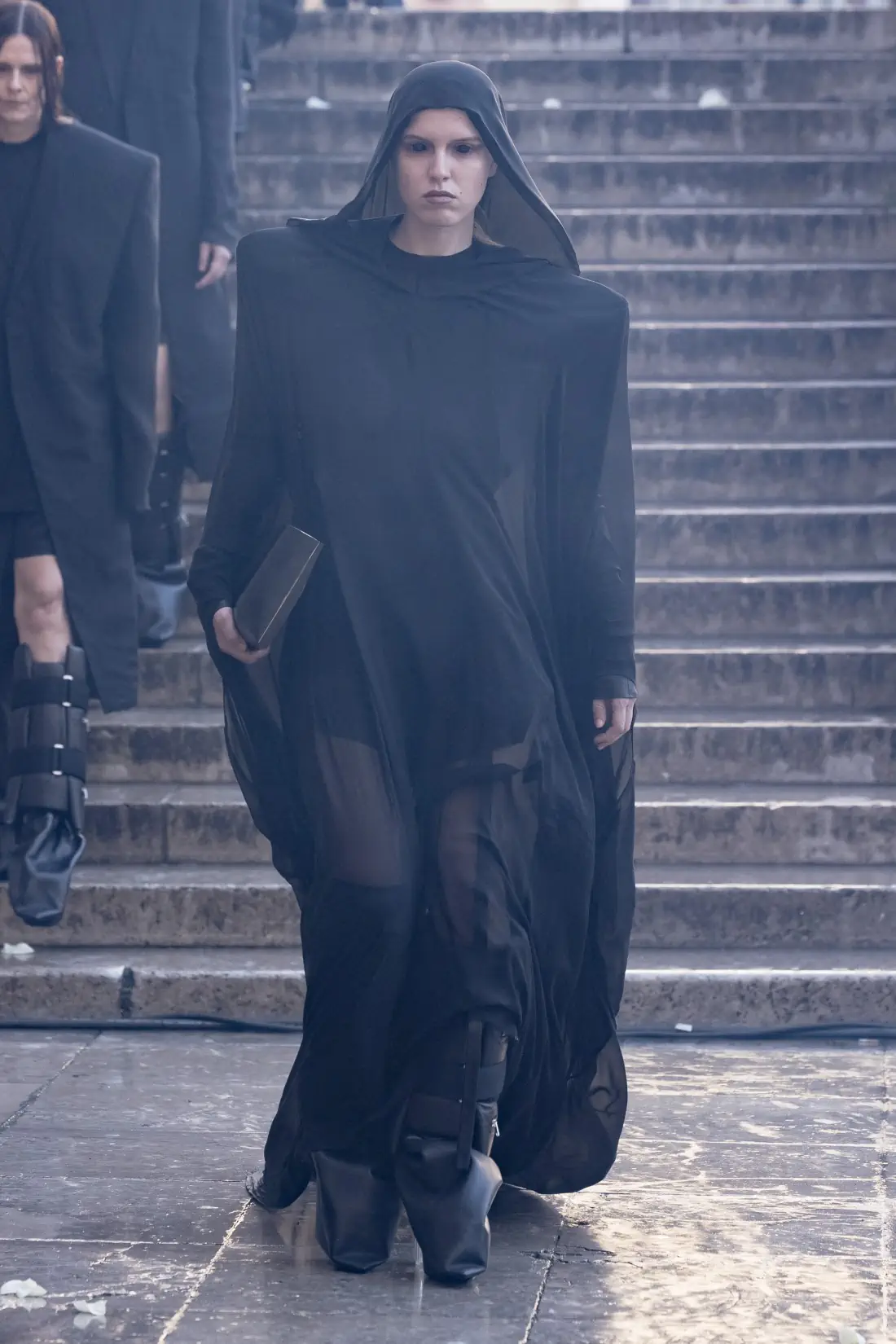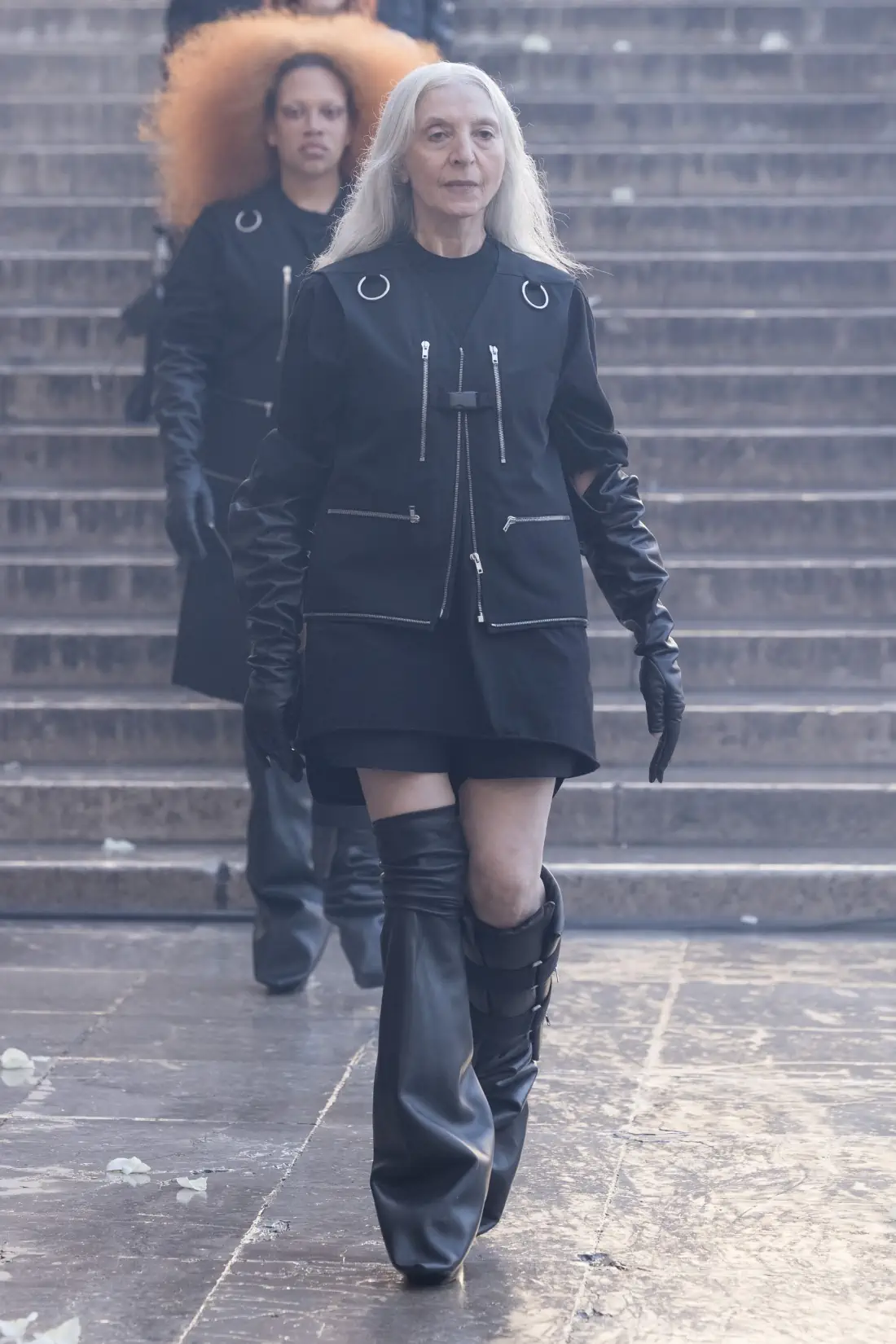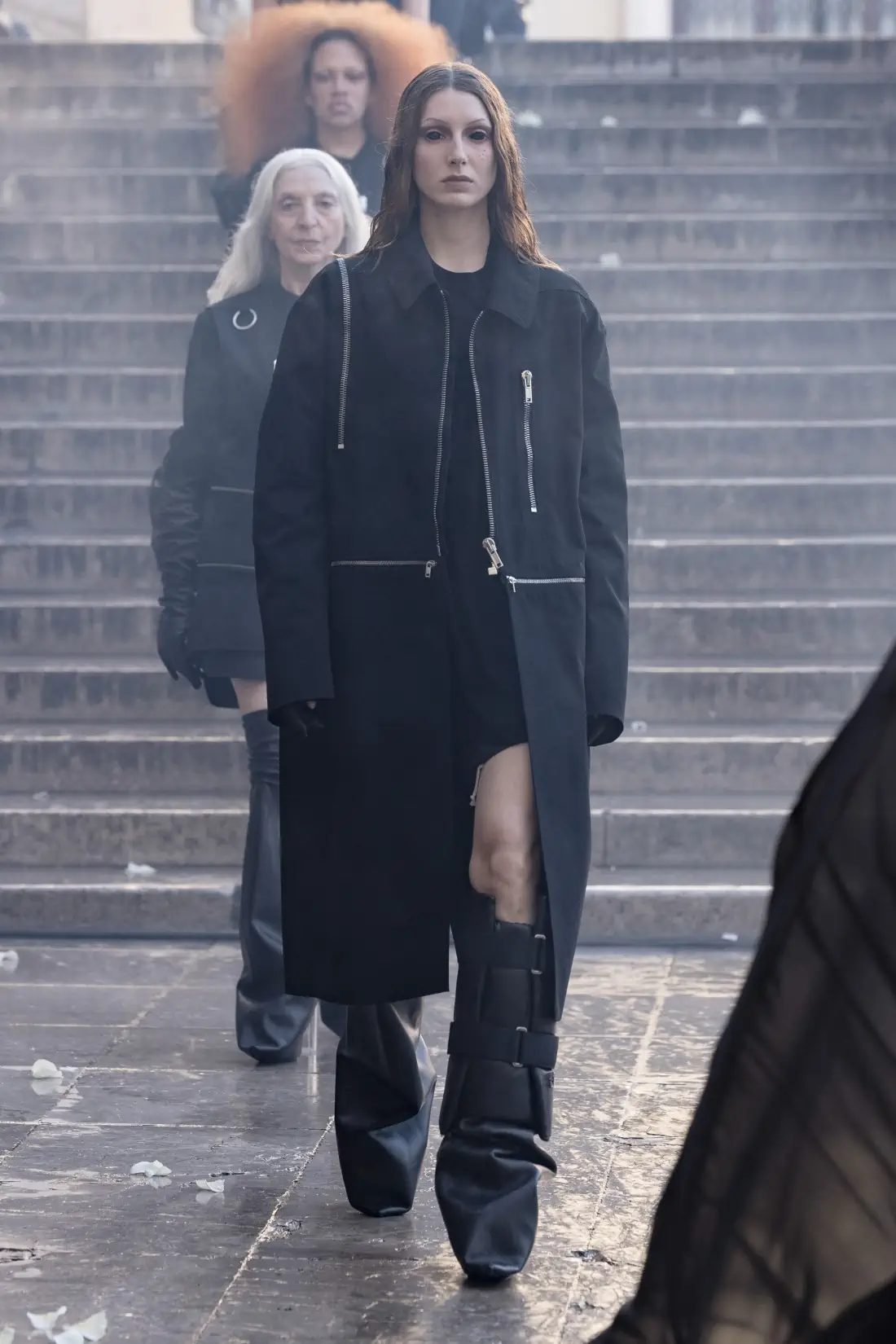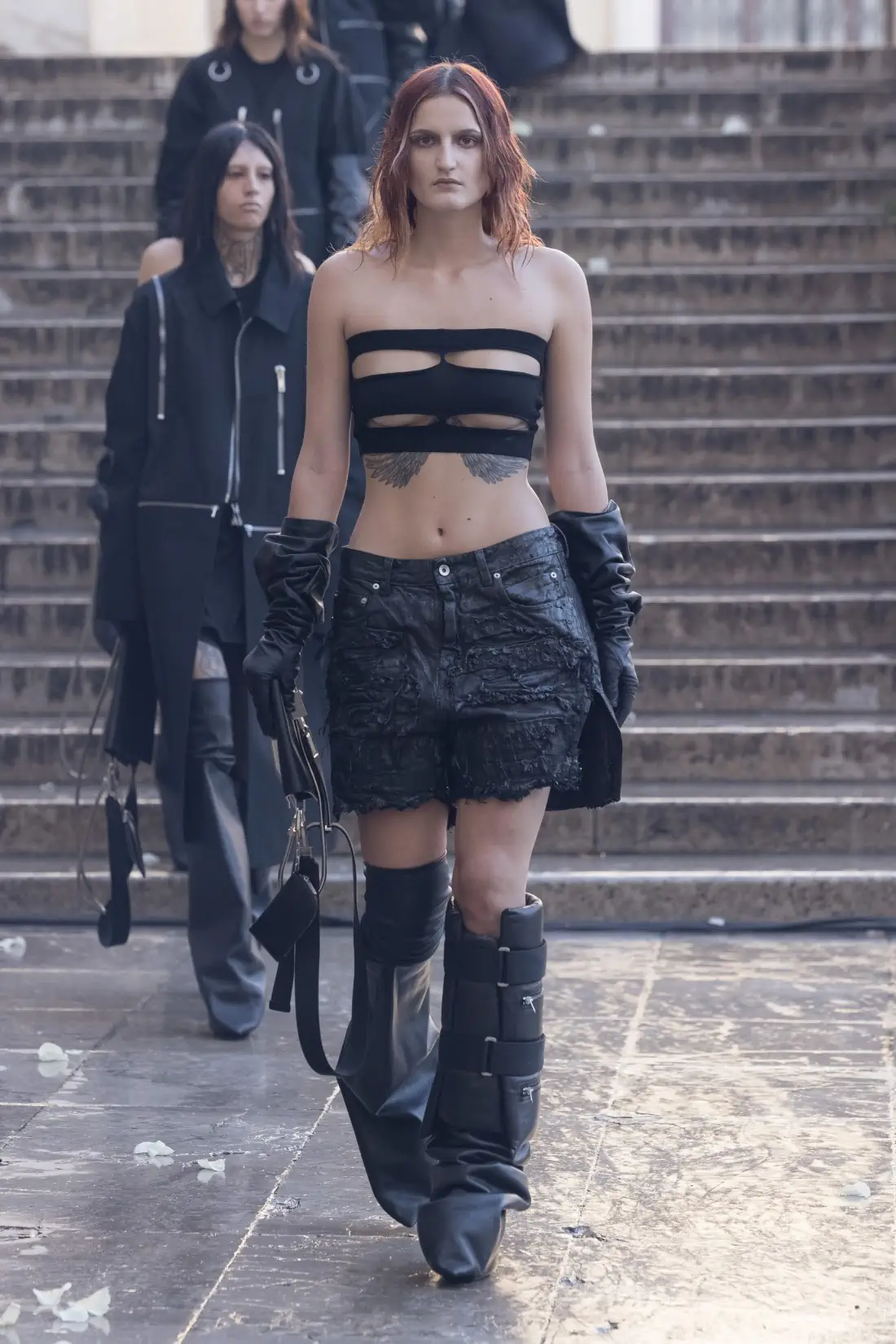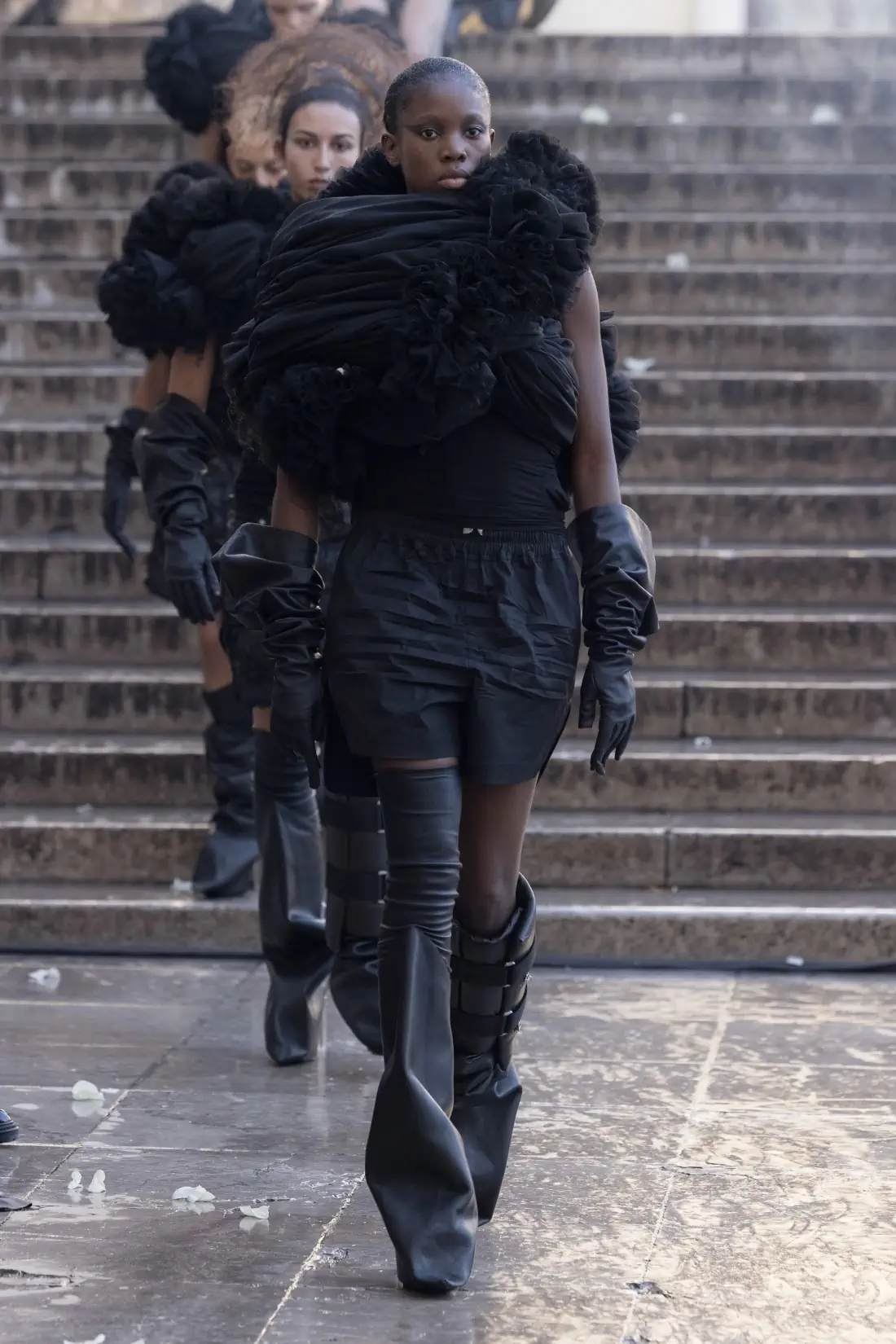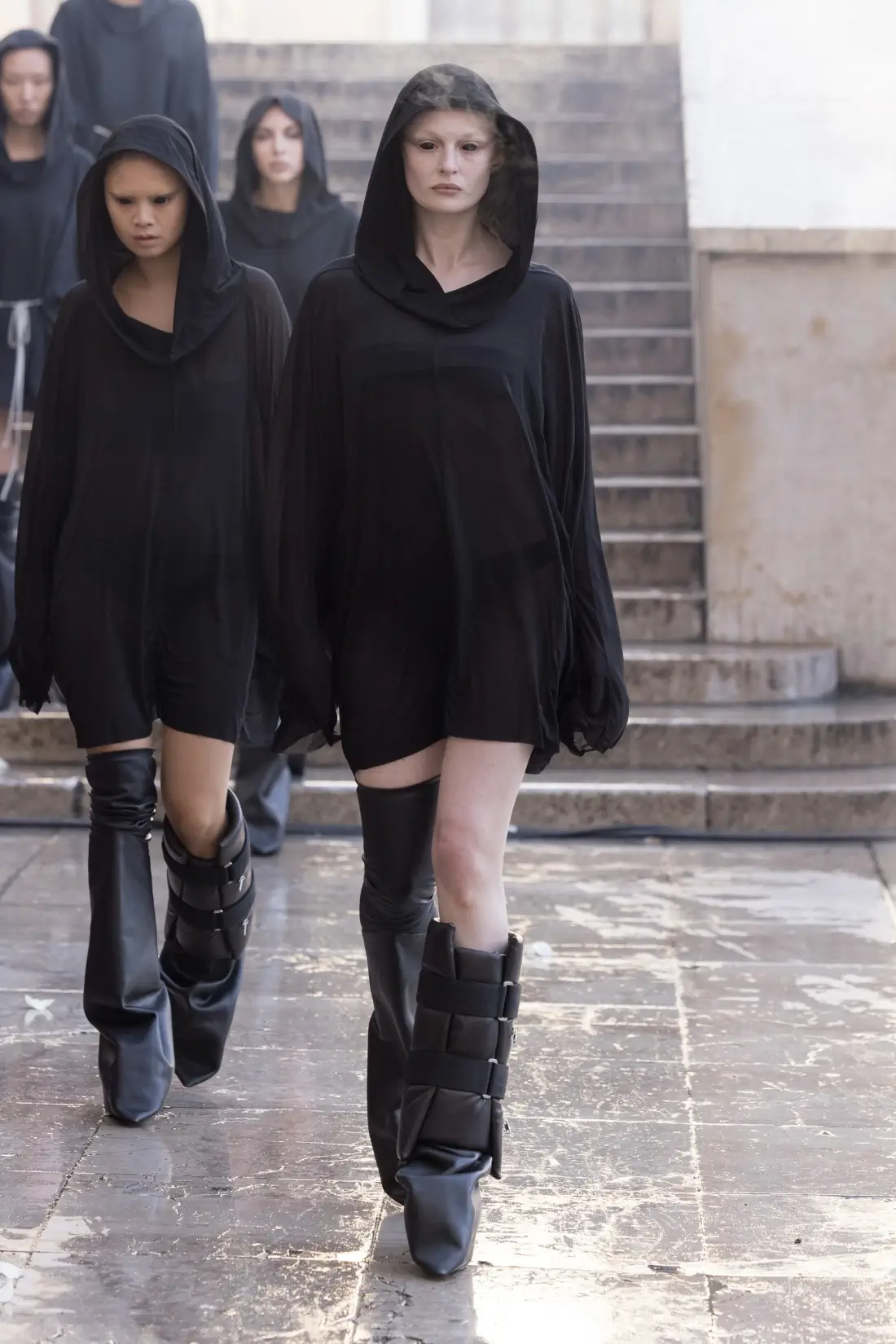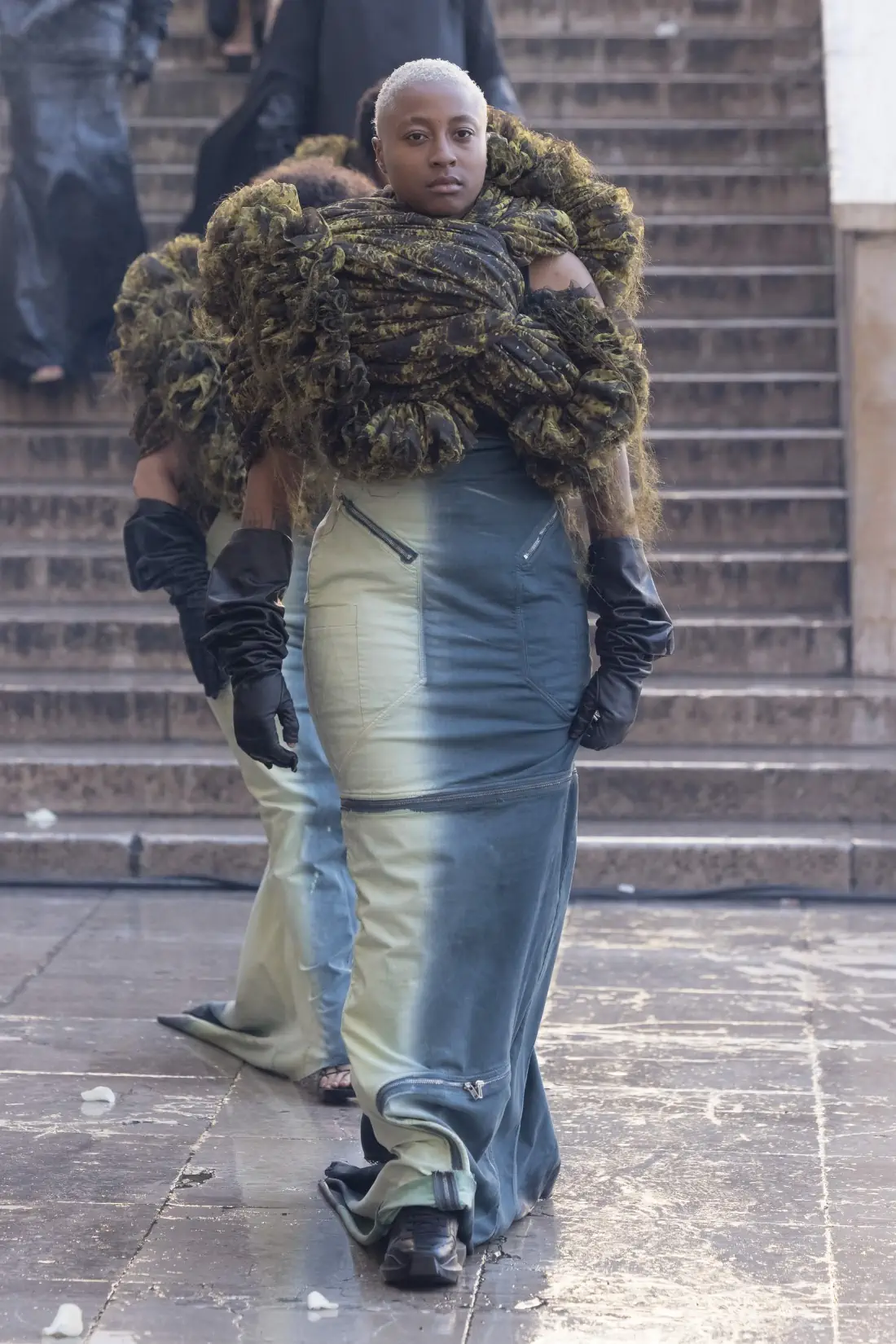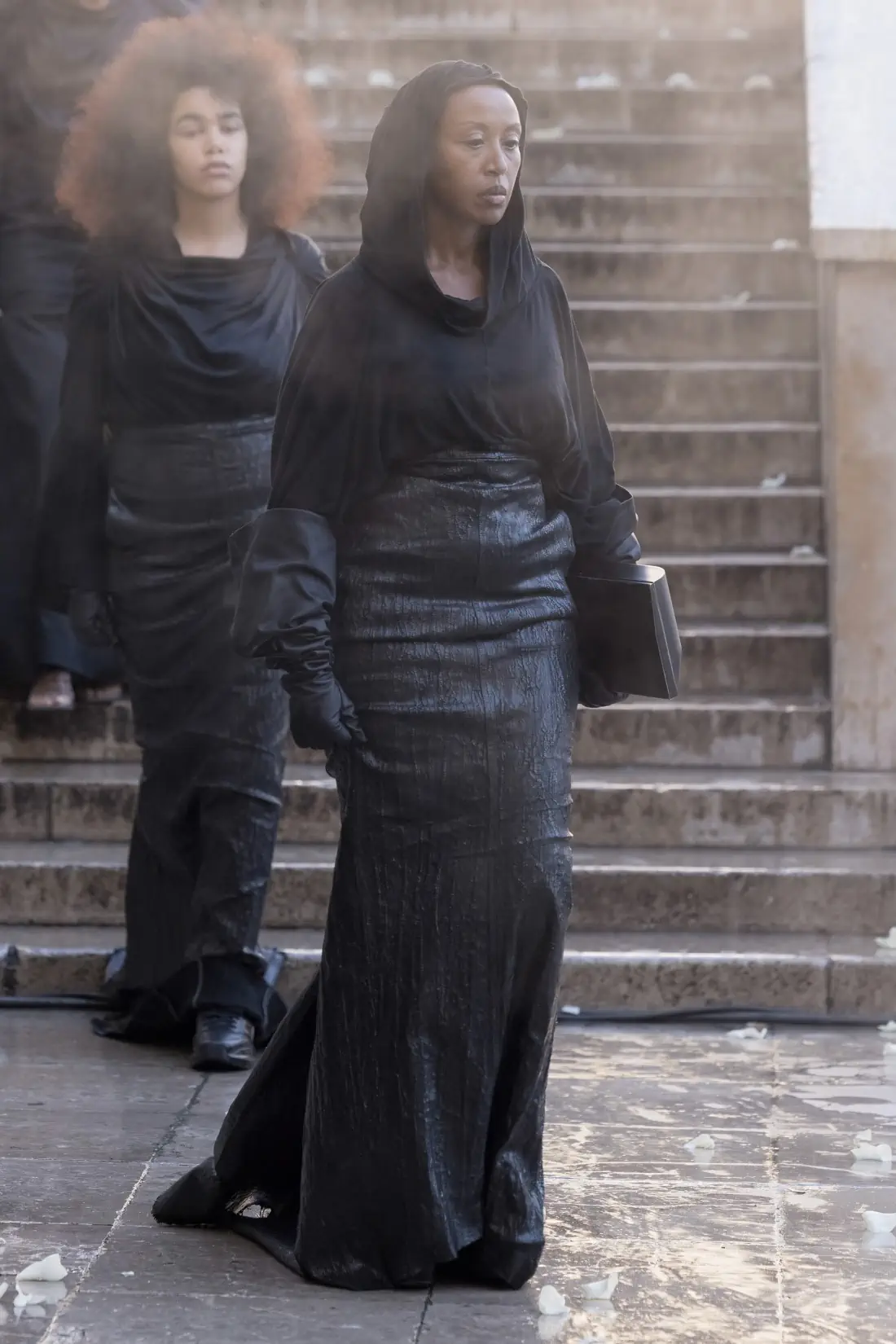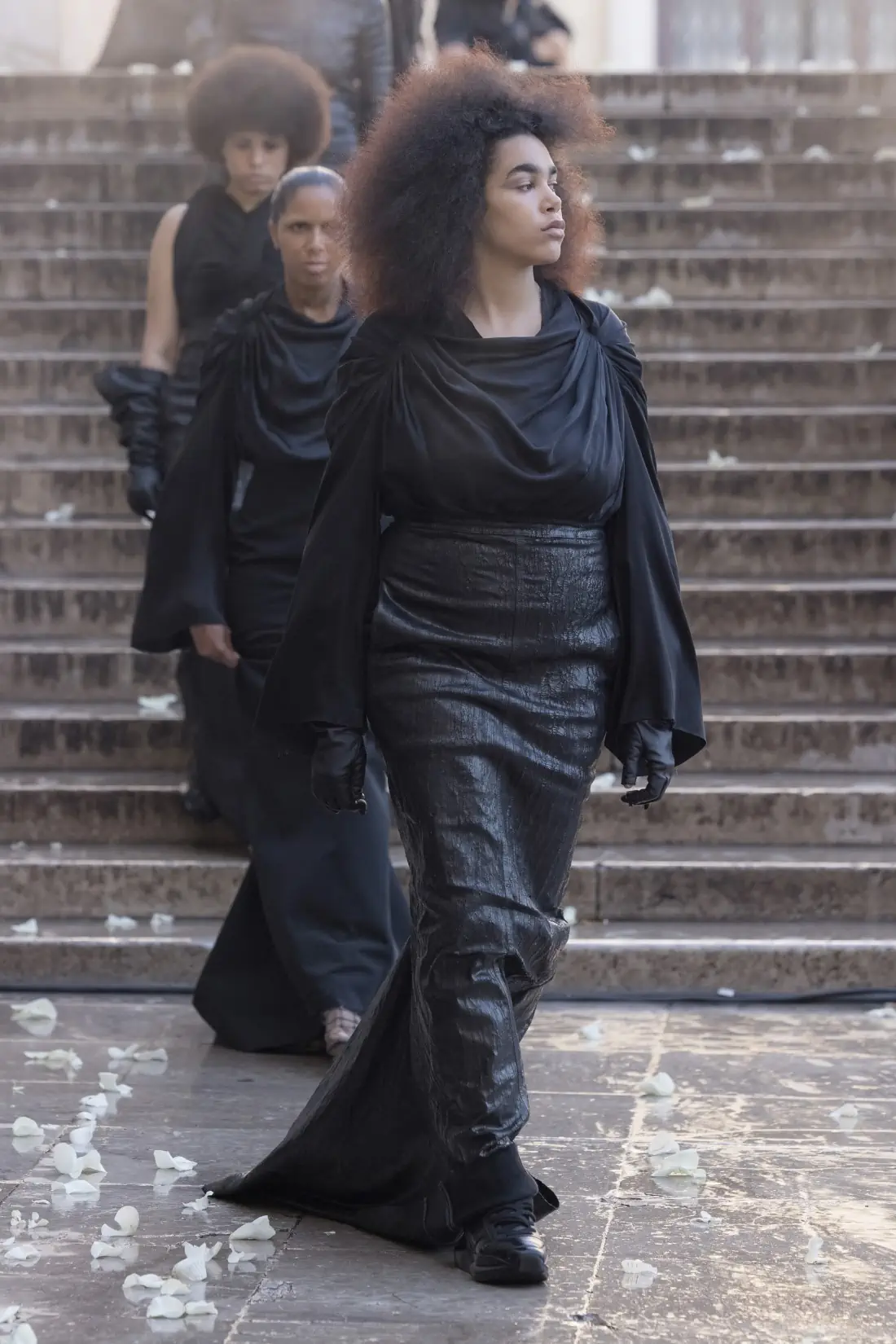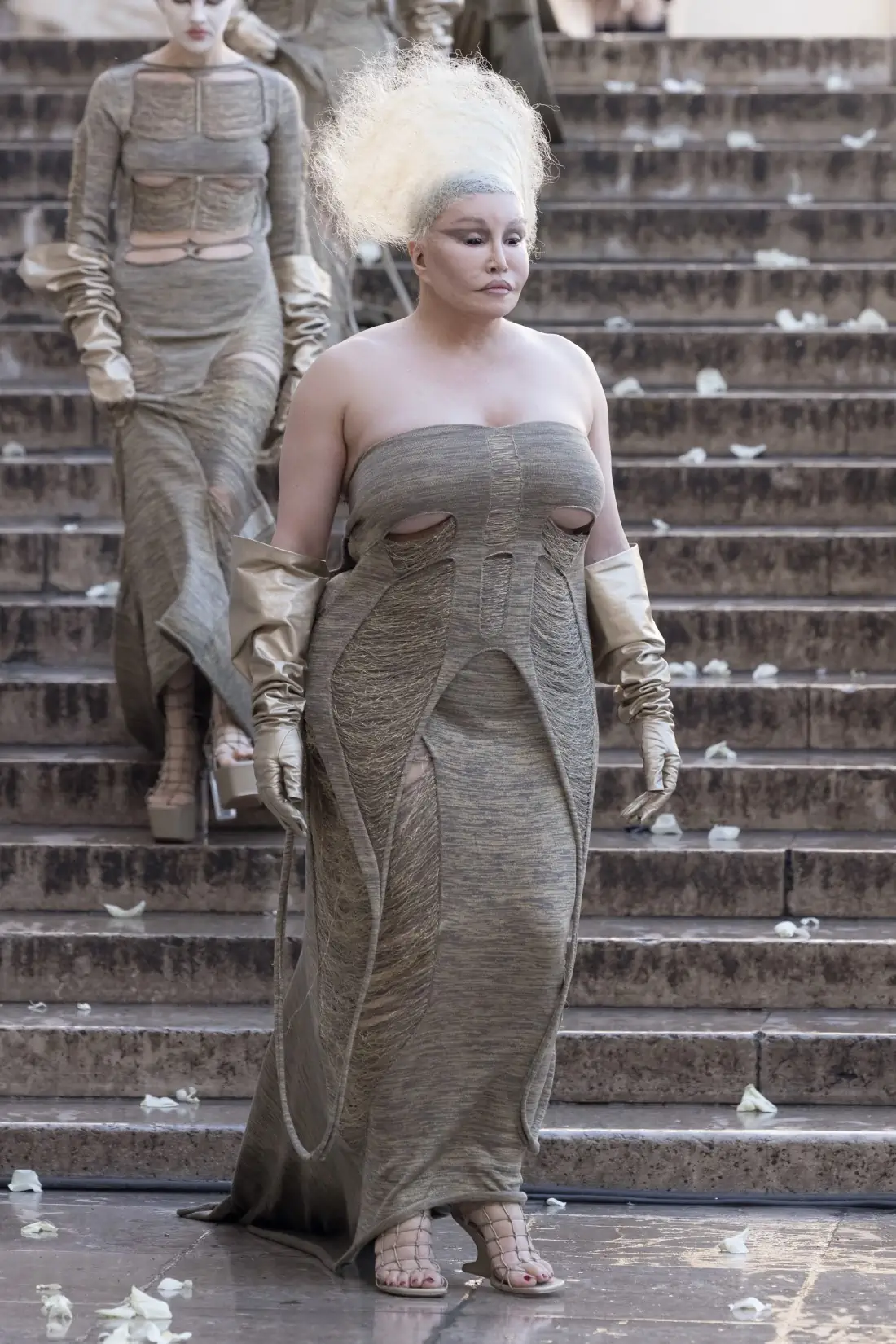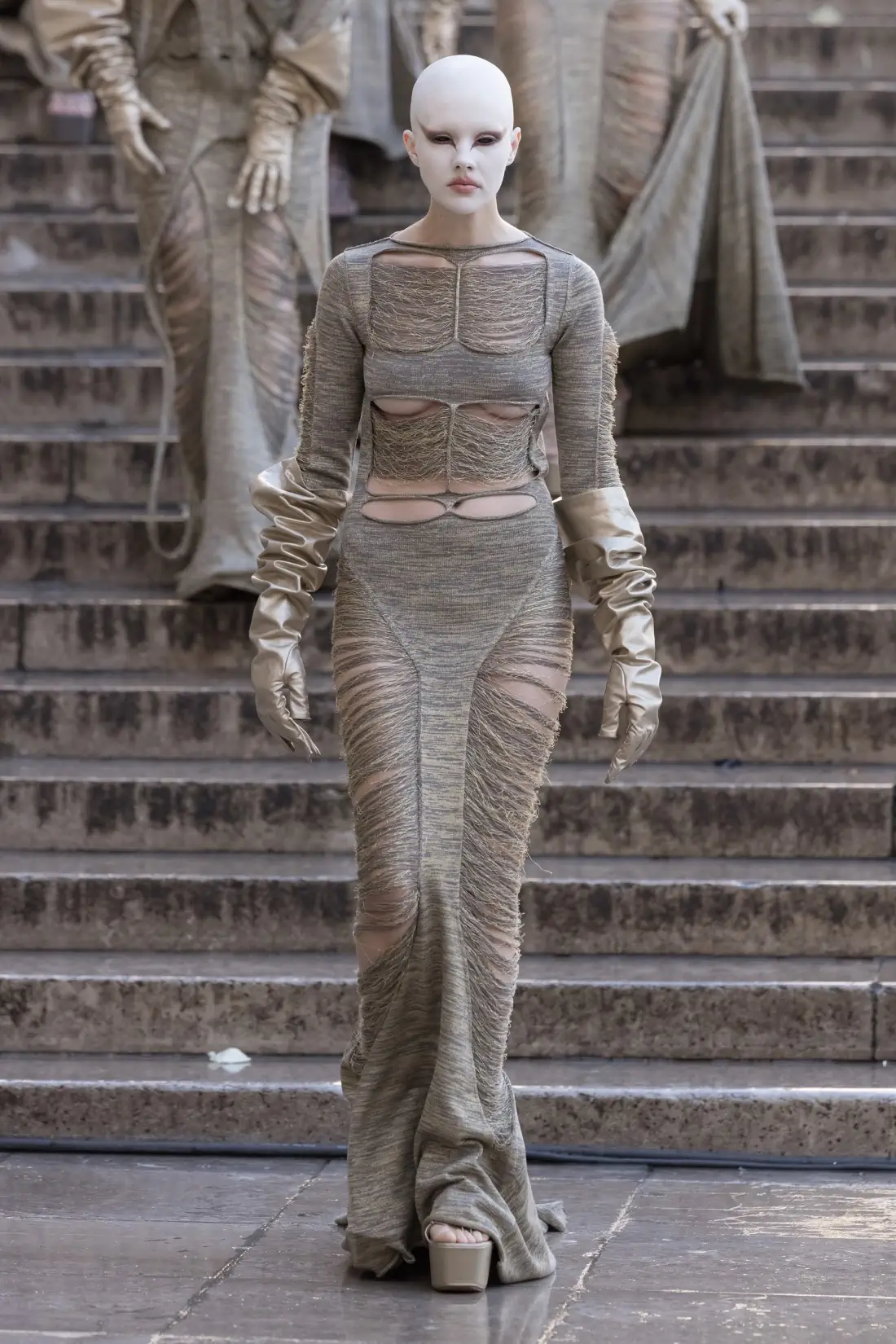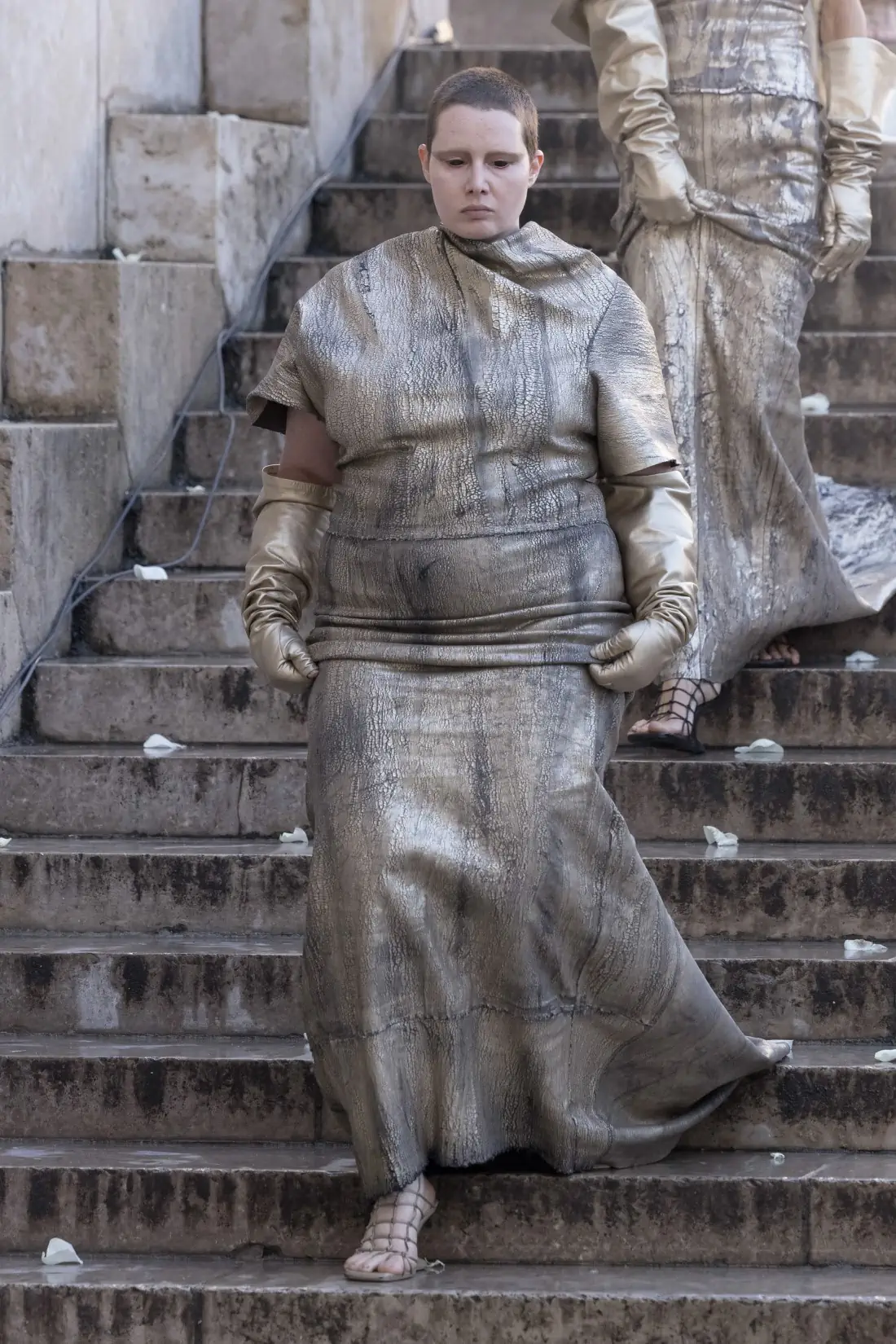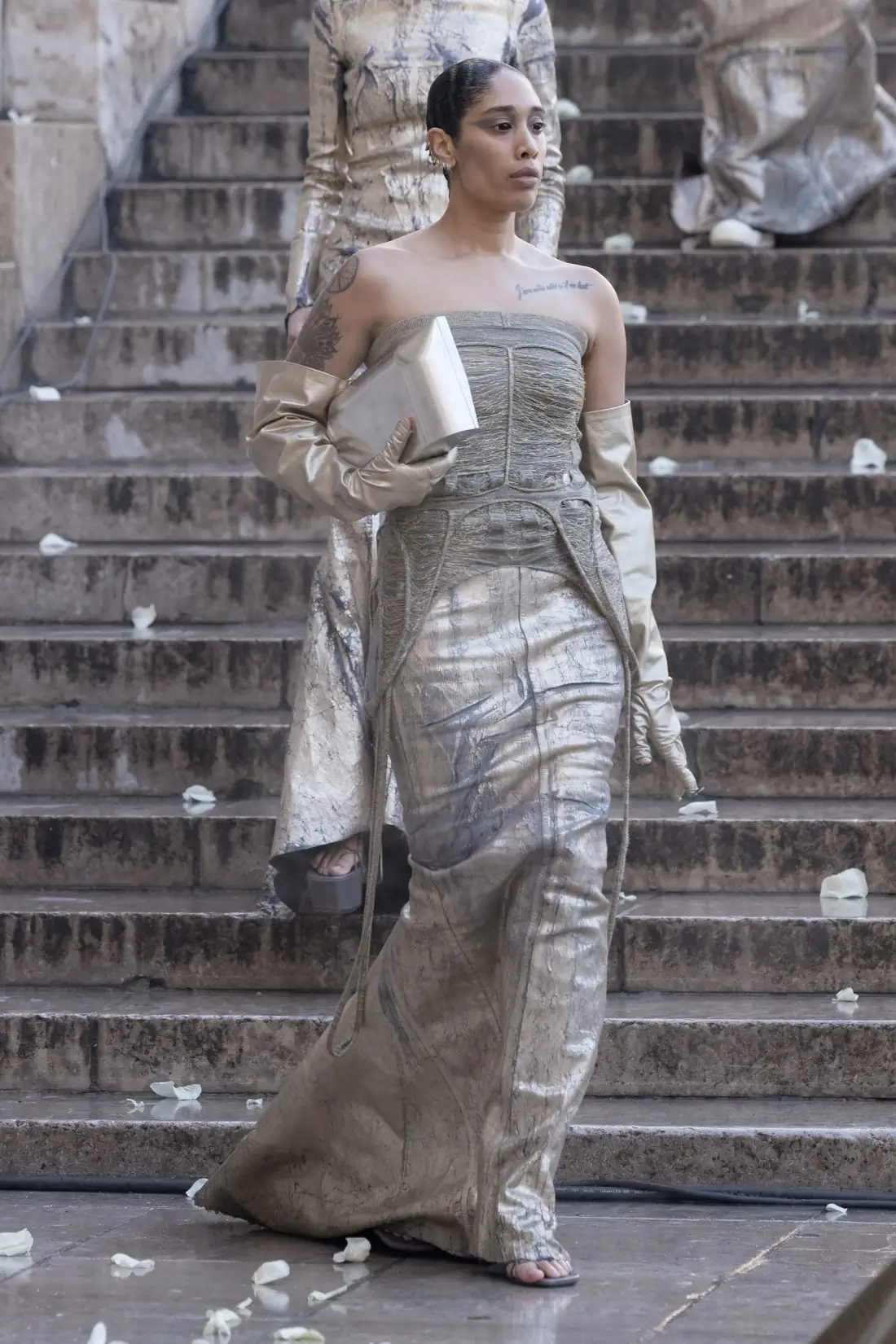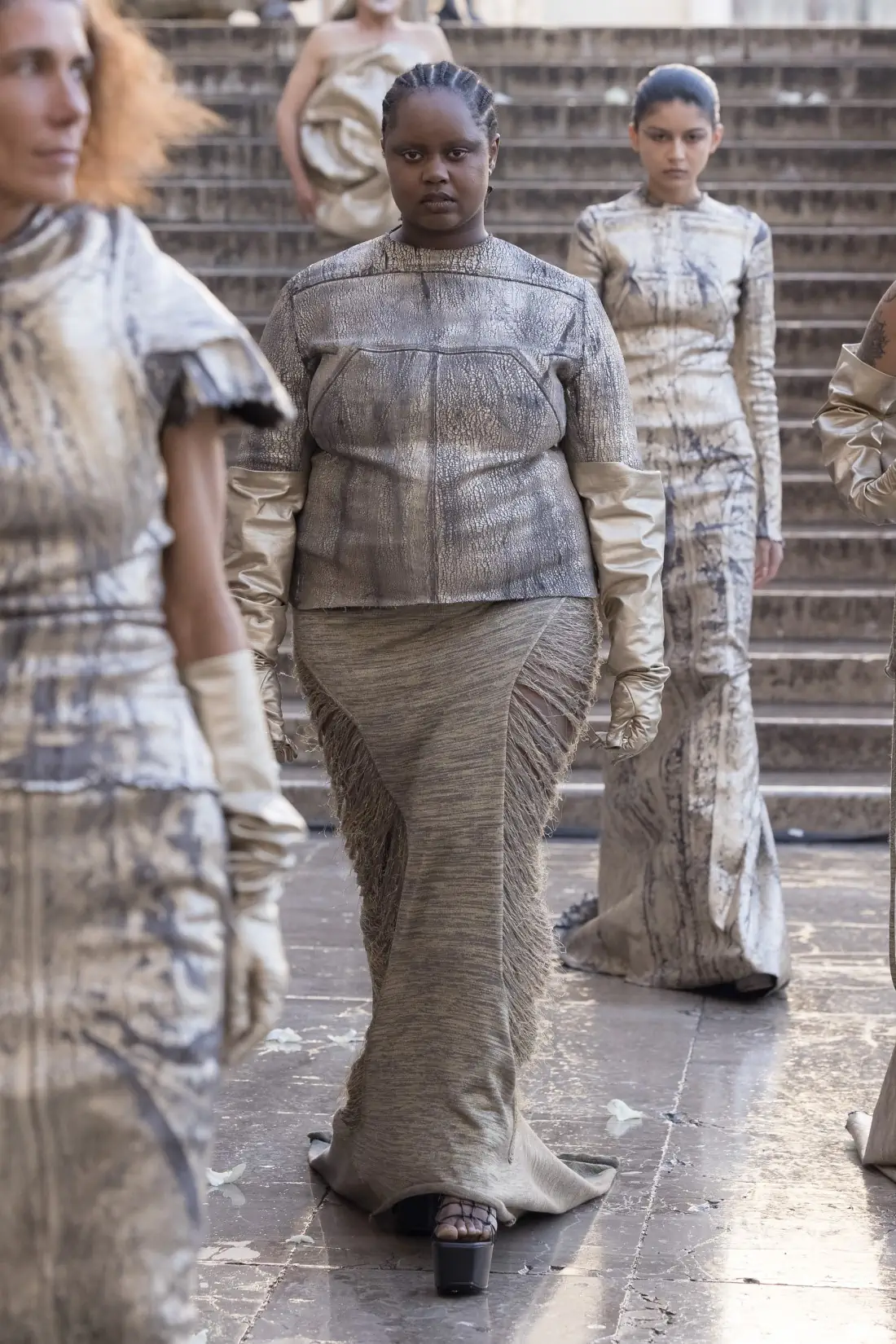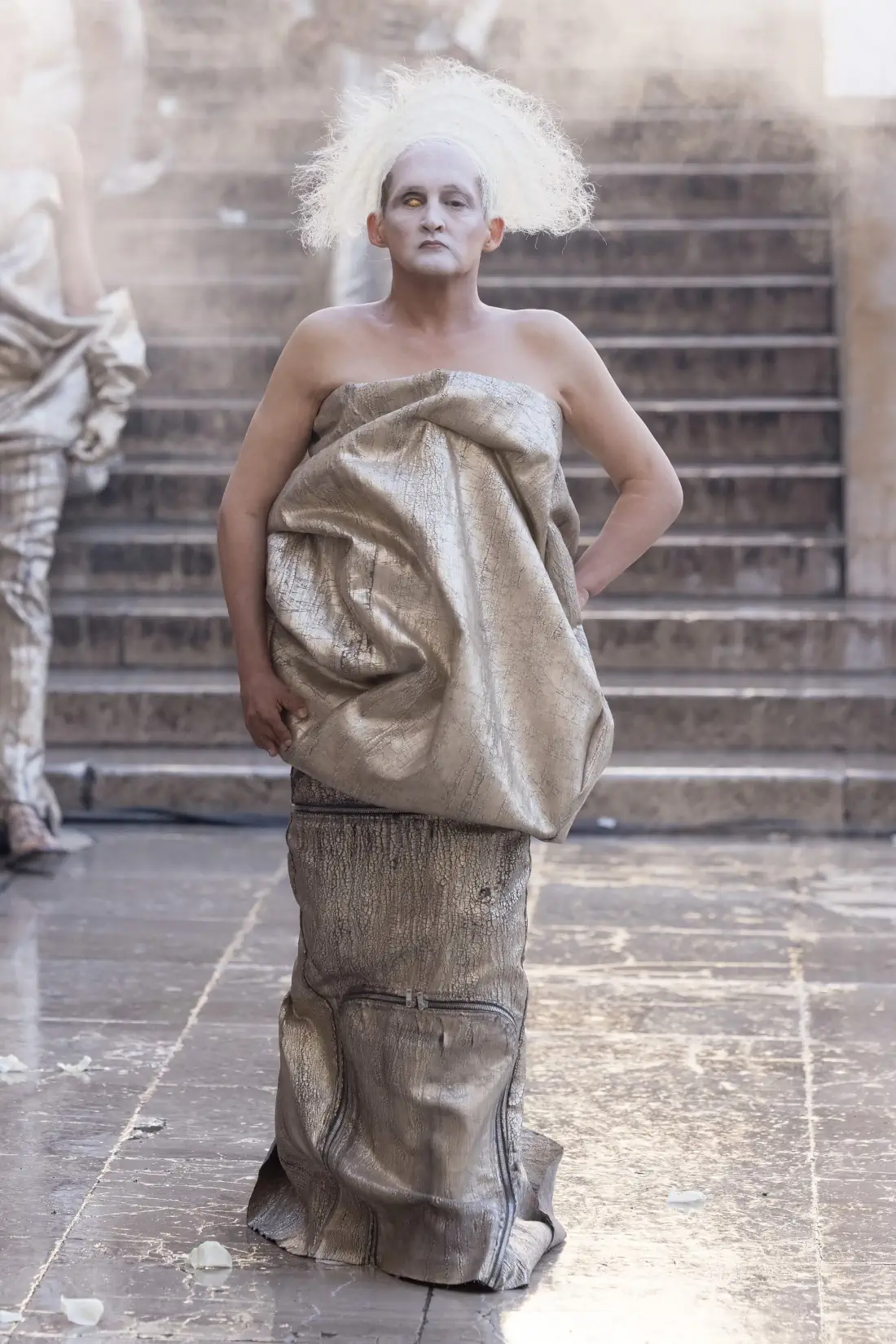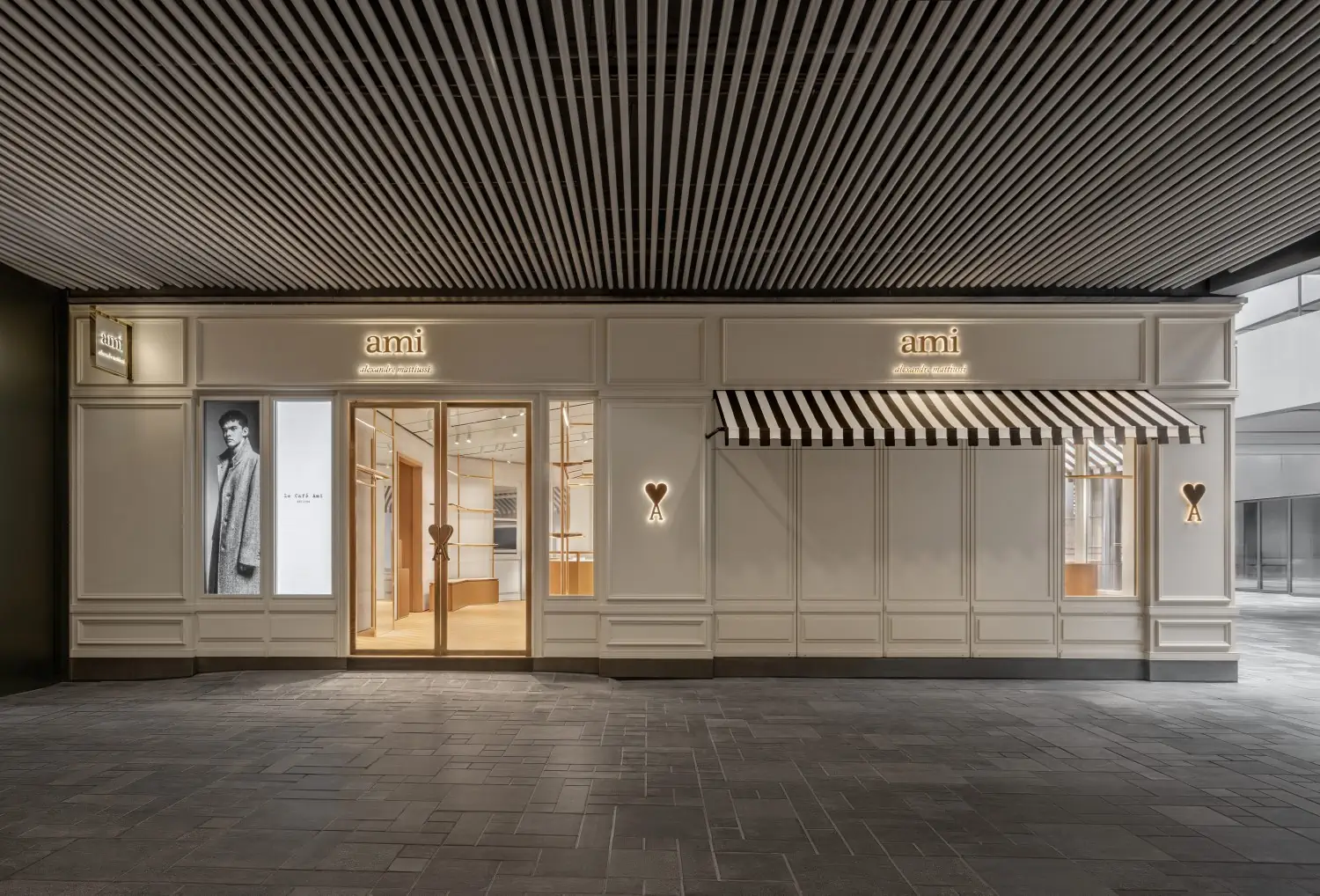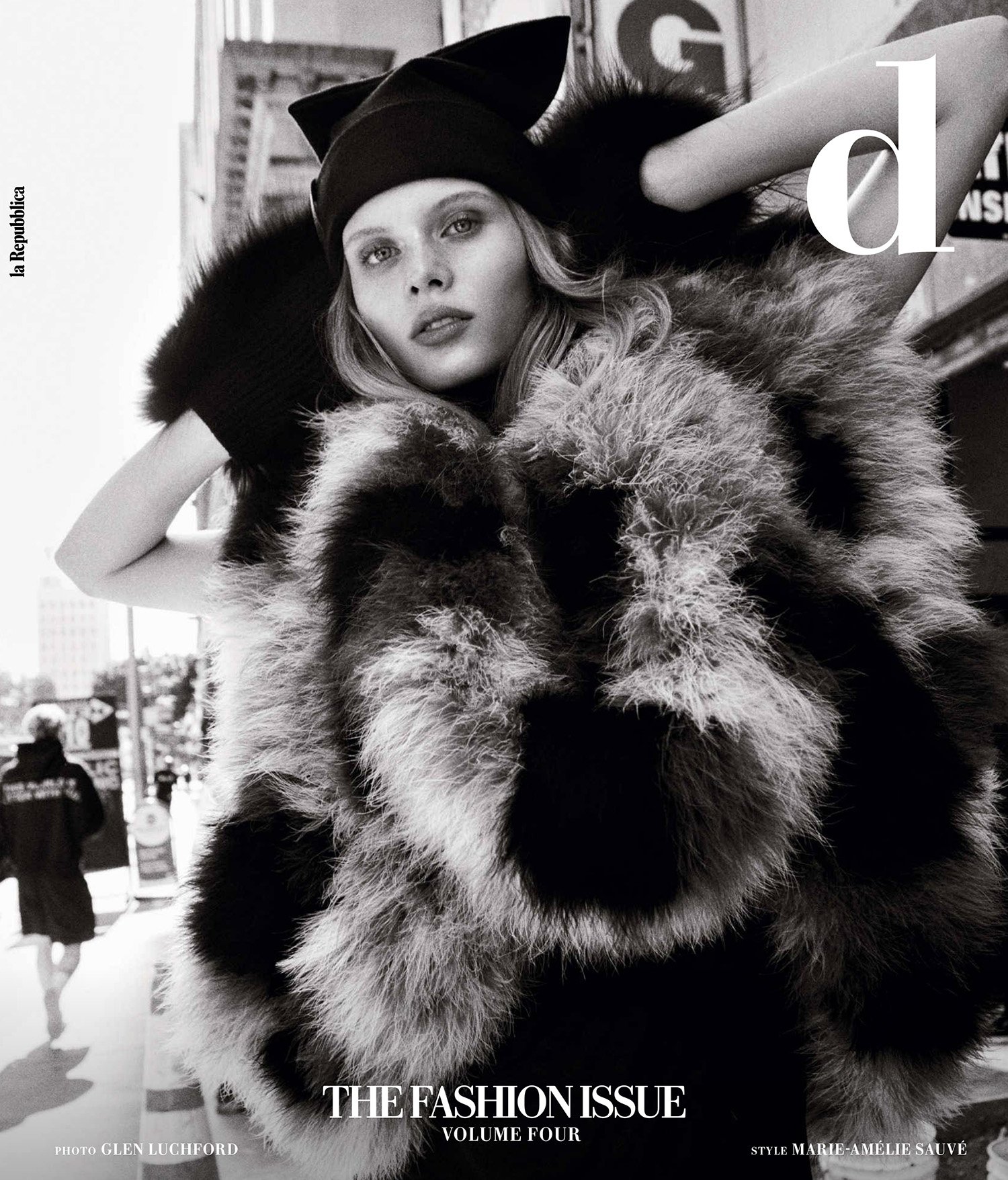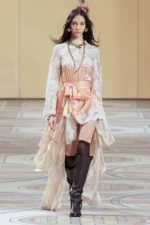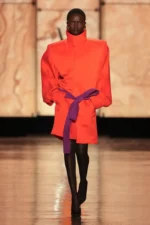Rick Owens’ Spring/Summer 2025 collection, shown at the Palais de Tokyo, offered a poignant reflection on inclusivity and the evolving narrative of beauty. The collection marked a departure from Owens’ typical casting, featuring students from Paris design schools. This decision stemmed from Owens‘ desire to address the unintentional exclusivity of his previous show, which was held within the confines of his Left Bank residence. By including a diverse range of body types, Owens challenged conventional runway norms and championed a more representative ideal of beauty. This inclusive casting resonated with Owens’ personal journey, mirroring his transition from small-town California to the eclectic embrace of Hollywood Boulevard.
The collection itself explored the interplay of contrasting elements, fusing the designer’s signature gothic elegance with a touch of Hollywood glamour. Long, narrow skirts with fishtail hems reminiscent of classic 1930s cinema were juxtaposed with edgy denim cutoffs, voluminous tulle stoles and avant-garde inflatable boots designed in collaboration with Straytukay. Printed chiffon caftans and capes with dramatic trains added an ethereal quality, while unraveling knit dresses, created in collaboration with Slovenian artisan Tanja Vidic, seamlessly blended ease and grandeur. Despite the unexpected challenge of navigating rain-slicked marble, the student models’ diverse forms embodied the spirit of freedom and self-expression that defines the Rick Owens aesthetic.
There was a sense of solemnity and introspection at Rick Owens’ Spring/Summer 2025 presentation, heightened by the dramatic strains of Wagner’s “Liebestod.” The collection featured a predominantly black palette with recurring motifs of strong shoulders, fishtail skirts and the designer’s signature Frankenstein-esque boots. The models, adorned with facial tattoos and piercings, moved in cohesive groups, their hooded capes, biker leathers and distressed knitwear creating a sense of tribal unity. The title “Hollywood” lent the collection a cinematic quality, but these women transcended the role of mere extras to embody characters in control of their own narratives. Owens described his aesthetic as a delicate balance of elegance and camp, a vision realized in long gowns fit for Tinseltown’s red carpets.
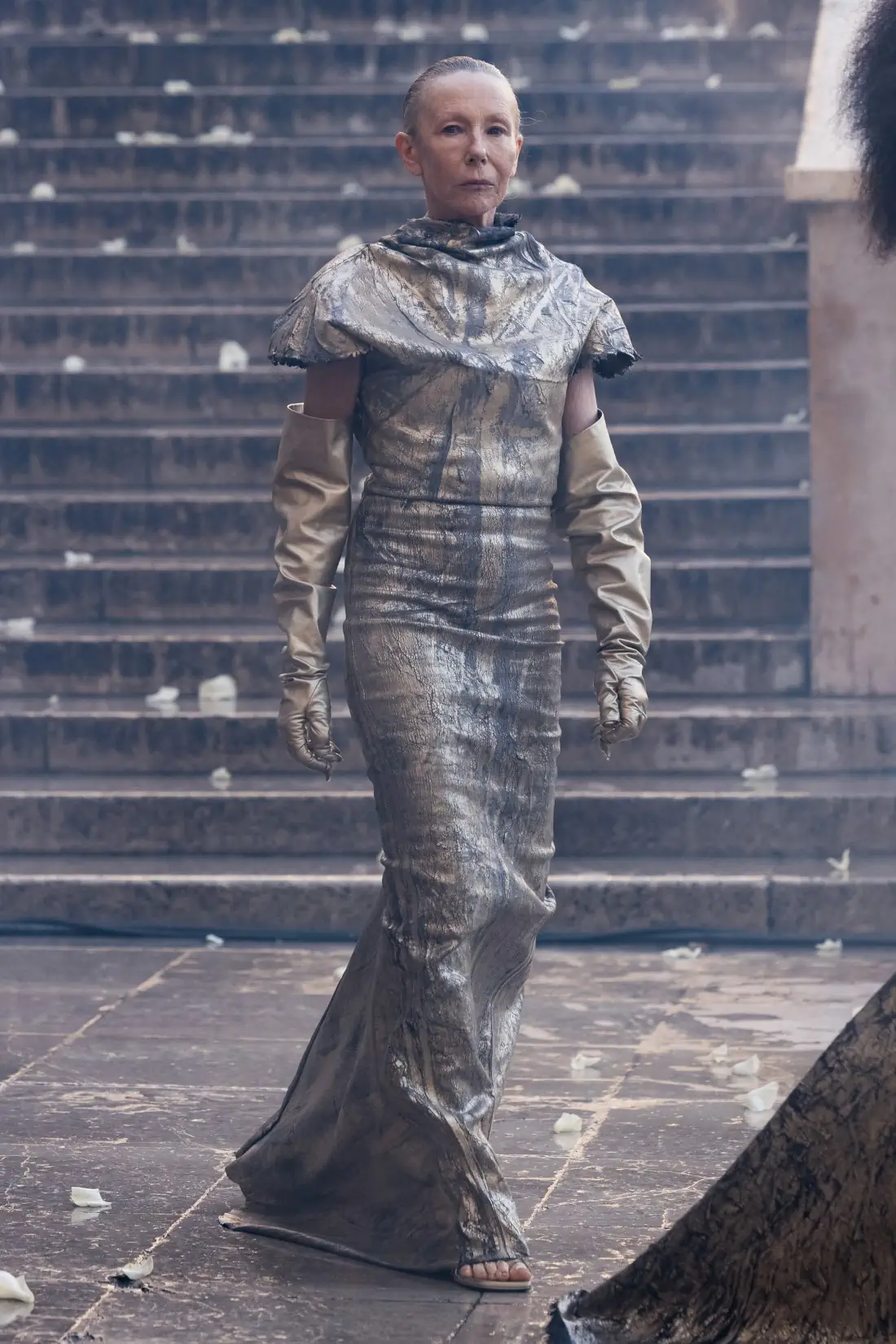
Despite the persistent rain that threatened to dampen the event, a miraculous parting of the clouds revealed a breathtaking golden-hour light, illuminating the shrouded figures on the rooftop as they scattered white flower petals into the ethereal white fog. This unexpected turn of events seemed to mirror Owens’s own evolving perspective on the use of classical music in his shows. Having previously resisted its “emotionally manipulative” qualities, he embraced its power in his June men’s show, featuring Beethoven’s “Symphony No. 7.” In a world grappling with conflict and uncertainty, Owens views the infusion of dignity and civilization as a necessary counterpoint to barbarism, advocating for a rapturous embrace of beauty and expression. His commitment to “cheerful depravity,” as he terms it, serves as an antidote to the judgment and conservatism that often permeate society. Through his inclusive casting and diverse designs, Owens extends an invitation to a wider audience, welcoming them into his alternative fashion universe. From boyish shorts and bra tops to zipper-streaked macs and jedi robes, the collection offered a range of options, demonstrating that Rick Owens’s vision of approachable fashion extends beyond the realm of shoulder pads and wings.


